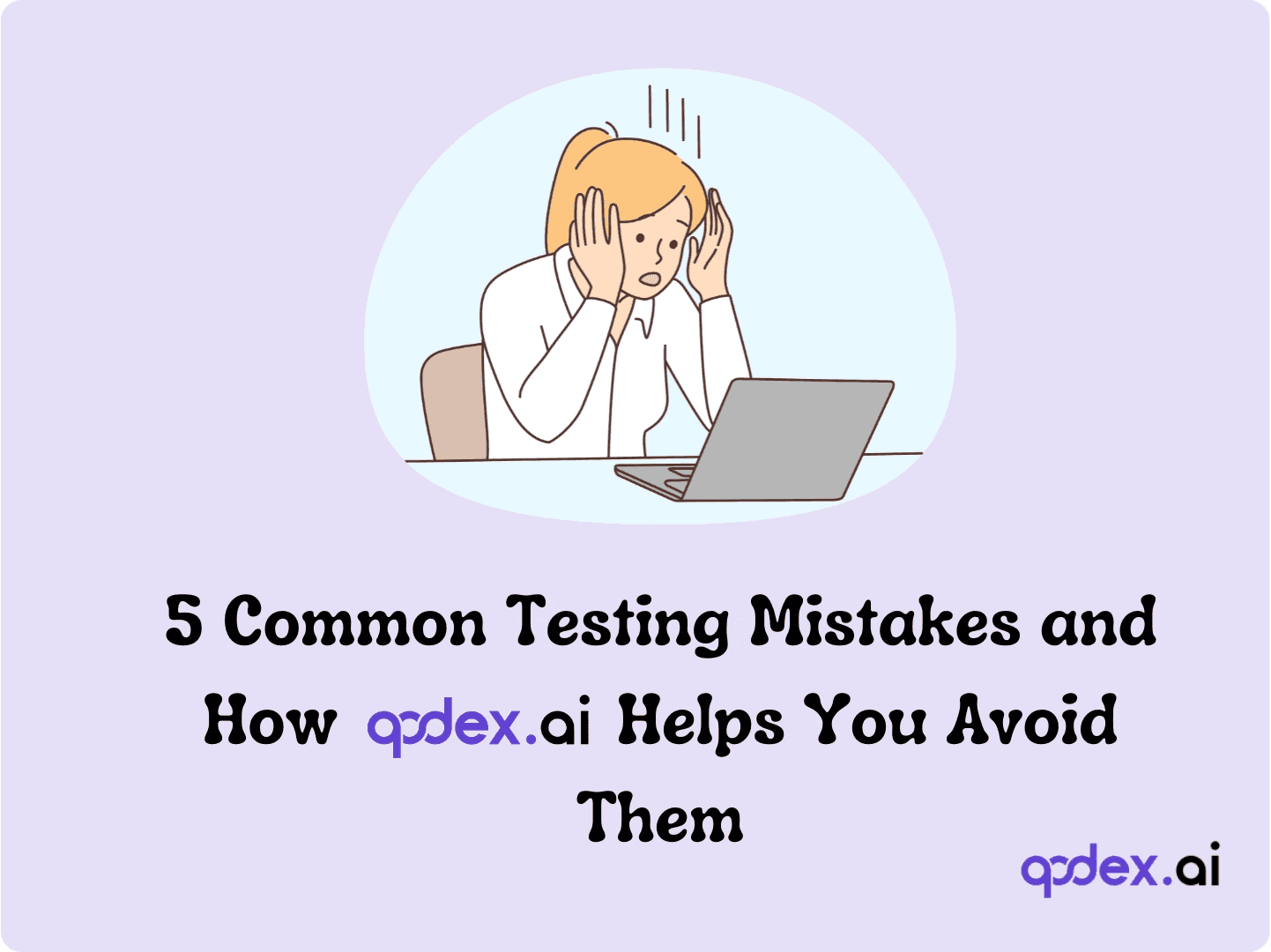Best SaaS QA Tools 2025: Streamline Your Testing Process
Unleashing the Power of SaaS QA Tools for Software Testing
Quality assurance (QA) is an essential part of software development, ensuring that each product works correctly before it reaches users. For startups and tech enthusiasts, SaaS QA tools are a game-changer, offering powerful and efficient solutions to streamline this process. In this blog post, we’ll explore the benefits of SaaS QA tools, highlight some top contenders.
What are SaaS QA Tools?
SaaS (Software as a Service) QA tools are cloud-based platforms designed to automate and streamline the software testing process. Unlike traditional QA tools, SaaS QA tools eliminate the need for local installation, offering flexibility and scalability to meet the demands of modern software development.
By leveraging the cloud, these tools provide real-time collaboration, seamless integration with various development environments, and access to the latest updates without manual intervention. This makes them particularly attractive for startups and small businesses looking to optimize their QA processes without investing heavily in infrastructure.
The Importance of QA in Software Development
Enhanced product reliability and stability
Fewer bugs and crashes in production
Consistent performance across different devices and platforms
Better handling of edge cases and unexpected user inputs
Improved customer satisfaction and trust
Smoother user experience leads to higher user retention
Fewer customer support issues related to software bugs
Positive word-of-mouth and reviews due to reliable software
Reduced development costs in the long run
Early detection of bugs saves time and resources in later stages
Fewer emergency fixes and patches needed post-release
Lower maintenance costs due to cleaner, well-tested code
Faster time-to-market with fewer post-release issues
Efficient QA processes can actually speed up development
Confidence in releases allows for more frequent updates
Less time spent on hotfixes means more time for new features
Better team collaboration and communication
QA processes encourage clear documentation and specifications
Improved dialogue between developers, testers, and stakeholders
Shared responsibility for quality across the entire team
Enhanced security and compliance
Thorough testing helps identify potential security vulnerabilities
Ensures software meets industry standards and regulations
Protects company reputation by preventing data breaches
Key Benefits of Using Cloud-based testing tools
In the fast-paced world of software development, quality assurance (QA) plays a crucial role in delivering reliable, high-performance applications. With the advent of cloud computing, Software as a Service (SaaS) QA tools have revolutionized how teams approach testing and quality management. These cloud-based testing tools offer numerous advantages over traditional on-premise solutions. Let's explore the key benefits of incorporating SaaS QA tools into your software development lifecycle.
Cost-Effectiveness
One of the primary advantages of cloud-based testing tools is their cost-effectiveness. Unlike traditional QA software that requires significant upfront investment in hardware and licenses, SaaS QA platforms operate on a subscription-based model. This approach allows companies to:
Reduce initial capital expenditure
Pay only for the resources they use (pay-as-you-go model)
Eliminate costs associated with maintaining physical infrastructure
Scale their QA efforts up or down without additional hardware investments
By leveraging online QA platforms, businesses can allocate their budget more efficiently, focusing on actual testing rather than infrastructure management.
Scalability and Flexibility
Web-based quality assurance software offers unparalleled scalability and flexibility. As project requirements evolve, teams can easily adjust their testing capabilities. Benefits include:
Instant access to additional testing resources during peak periods
Ability to scale down during quieter phases, optimizing costs
Access to a wide range of testing environments without hardware limitations
Flexibility to adapt to changing project needs quickly
This scalability ensures that QA efforts can keep pace with agile development practices, supporting rapid iterations and frequent releases.
Accessibility and Enhanced Collaboration
Remote testing solutions break down geographical barriers, allowing team members to access testing environments from anywhere with an internet connection. This accessibility fosters better collaboration:
Distributed teams can work together seamlessly
Real-time sharing of test results and reports
Improved communication between developers, testers, and stakeholders
Facilitation of follow-the-sun testing models for global teams
Cloud QA platforms enable a more connected and efficient workflow, crucial in today's increasingly remote work environment.
Continuous Updates and Improvements
SaaS QA tools are continuously updated by their providers, ensuring users always have access to the latest features and improvements. Benefits include:
Regular updates with new functionalities and bug fixes
Immediate access to the latest testing methodologies and best practices
Reduced need for in-house tool maintenance and upgrades
Consistent performance improvements without user intervention
This continuous evolution helps teams stay at the forefront of QA practices without the burden of managing software updates.
Comprehensive Testing Coverage
Online test management tools offer a wide range of testing capabilities, allowing teams to conduct various types of tests from a single platform. Advantages include:
Support for functional, performance, security, and usability testing
Ability to test across multiple browsers, devices, and operating systems
Integration of both manual and automated testing processes
Access to real device farms for mobile application testing
This comprehensive coverage ensures thorough quality assurance across all aspects of software development.
Advanced Analytics and Reporting
Cloud-native testing platforms often come equipped with powerful analytics and reporting features. These capabilities provide:
Detailed insights into testing processes and results
Customizable dashboards for different stakeholders
Data-driven decision making for quality improvements
Real-time visibility into testing progress and bottlenecks
These analytics help teams identify trends, make informed decisions, and continuously improve their QA processes.
Seamless Integration Capabilities
Web-hosted test automation tools are designed to integrate seamlessly with other development and project management tools. Benefits include:
Easy integration with CI/CD pipelines, supporting DevOps practices
Compatibility with popular project management and bug tracking systems
APIs for custom integrations with existing workflows
Support for various testing frameworks and programming languages
This integration capability ensures that QA remains an integral part of the development process, rather than a siloed activity.
Enhanced Security Measures
Contrary to common misconceptions, cloud-based QA tools often provide robust security features:
Regular security updates and patches by SaaS providers
Data encryption in transit and at rest
Secure access controls and user authentication
Compliance with industry standards and regulations (e.g., GDPR, HIPAA)
These security measures often surpass what many organizations can implement and maintain in-house.
Top SaaS QA Tools for Software Testing
Qodex.ai
Qodex.ai is an AI-powered software testing platform that automates the generation and maintenance of test cases, providing comprehensive test coverage and reducing the need for manual effort.
Best Features:
AI-driven API testing automation
Simple text prompts for creating test cases
Eliminates manual test creation
Provides comprehensive test coverage
CI/CD integration
Detailed reporting and analytics
Katalon Studio
Katalon Studio is a versatile test automation solution for web, API, mobile, and desktop applications. Its codeless approach and rich features make it suitable for both beginners and experienced testers, allowing teams to automate their testing efforts efficiently.
Best Features:
Versatile test automation tool
Record and playback functionality
Built-in keywords and object repositories
Cross-browser and cross-device testing
CI/CD integration
BrowserStack
BrowserStack is a cloud-based cross-browser testing platform that provides instant access to a vast range of real browsers and devices. It enables teams to test their websites and applications on different configurations, ensuring a consistent user experience across various platforms.
Best Features:
Wide range of real browsers and devices
Live interactive testing
Automated screenshot testing
Selenium testing on real device cloud
CI/CD integration
Testsigma
Testsigma is an AI-powered test automation platform that enables teams to create, execute, and maintain tests for web, mobile, and API applications with ease. Its codeless approach and AI capabilities make it a great choice for both technical and non-technical users.
Best Features:
AI-driven test automation
Scriptless test creation
Cross-browser and cross-device testing
CI/CD integration
Detailed reporting
LambdaTest
LambdaTest is a cloud-based cross-browser testing platform that allows you to perform manual and automated testing on a wide range of real browsers and devices. Its extensive device cloud and seamless integrations make it a popular choice for ensuring cross-platform compatibility.
Best Features:
Massive real device cloud
Live interactive testing
Automated screenshot testing
CI/CD integration
Geolocation testing
Applitools
Applitools is a visual testing and monitoring platform that uses AI to catch visual bugs and ensure a flawless user interface across different browsers, devices, and screen sizes. It helps teams release high-quality software faster by automating visual testing and reducing the need for manual reviews.
Best Features:
Visual AI-powered testing
Automated visual regression testing
Root cause analysis
Integration with test automation frameworks
Self-healing tests
Sauce Labs
Sauce Labs is a cloud-based testing platform that offers a comprehensive suite of tools for web and mobile app testing. With its extensive device coverage, performance testing capabilities, and integrations with popular CI/CD tools, Sauce Labs helps teams accelerate their testing cycles and deliver high-quality applications.
Best Features:
Comprehensive cloud-based testing platform
Live and automated testing on real devices
Performance testing
Error reporting and debugging
CI/CD integration
How Qodex.ai Stands Out
Qodex.ai is a revolutionary AI-powered QA tool that brings several unique features to the table. Its AI Software Test Engineer delivers over 70% test coverage with minimal effort, allowing teams to ship bug-free software 200% faster while reducing testing budgets by 80%.
AI-Powered Testing
Qodex.ai leverages advanced AI technology to understand product documentation, codebases, and other resources. This enables the AI agent to build a comprehensive knowledge base of the product, ensuring that tests are thorough and contextually accurate.
Seamless Integration
Qodex.ai integrates seamlessly with various development tools and workflows, allowing teams to incorporate it into their existing processes with ease. This ensures a smooth transition and maximizes efficiency.
Continuous Test Coverage
With Qodex.ai, teams can achieve continuous high automation test coverage, ensuring that any changes to the software are thoroughly tested before deployment. This reduces the risk of bugs and performance issues, resulting in a smoother user experience.
Implementing SaaS QA Tools in Your Workflow
Step 1: Identify Your Needs
Before selecting a SaaS QA tool, it’s essential to identify your specific needs and requirements. Consider factors such as the types of applications you’re testing, the size of your team, and your budget.
Step 2: Research and Compare Tools
Research and compare different SaaS QA tools to find the one that best meets your needs. Look for tools that offer the features and integrations you require, and consider reading reviews and case studies to gain insights from other users.
Step 3: Implement and Train
Once you’ve selected a tool, implement it into your workflow and provide training for your team. Ensure that everyone is familiar with the tool’s features and capabilities, and encourage open communication to address any challenges.
Step 4: Monitor and Optimize
Regularly monitor the performance of your SaaS QA tool and make adjustments as needed. Continuously seek feedback from your team and look for ways to optimize your QA processes to achieve the best results.
Conclusion
SaaS QA tools are transforming the landscape of software testing, offering powerful solutions that enhance efficiency, collaboration, and cost-effectiveness. By leveraging these tools, startups and tech enthusiasts can ensure that their software meets the highest standards of quality and performance.
Qodex.ai stands out as a cutting-edge solution that combines AI-powered testing with seamless integration and continuous test coverage. By incorporating Qodex.ai into your workflow, you can streamline your QA processes and deliver bug-free software faster than ever before.
Ready to take your software testing to the next level? Sign up for Qodex.ai today and experience the future of QA automation!
Frequently Asked Questions
Why should you choose Qodex.ai?
Qodex.ai simplifies and accelerates the API testing process by leveraging AI-powered tools and automation. Here's why it stands out:
- AI-Powered Automation
Achieve 100% API testing automation without writing a single line of code. Qodex.ai’s cutting-edge AI reduces manual effort, delivering unmatched efficiency and precision.
- User-Friendly Platform
Effortlessly import API collections from Postman, Swagger, or application logs and begin testing in minutes. No steep learning curves or technical expertise required.
- Customizable Test Scenarios
Whether you’re using AI-assisted test generation or creating test cases manually, Qodex.ai adapts to your needs. Build robust scenarios tailored to your project requirements.
- Real-Time Monitoring and Reporting
Gain instant insights into API health, test success rates, and performance metrics. Our integrated dashboards ensure you’re always in control, identifying and addressing issues early.
- Scalable Collaboration Tools
Designed for teams of all sizes, Qodex.ai offers test plans, suites, and documentation that foster seamless collaboration. Perfect for startups, enterprises, and microservices architecture.
- Cost and Time Efficiency
Save time and resources by eliminating manual testing overhead. With Qodex.ai’s automation, you can focus on innovation while cutting operational costs.
- Continuous Integration/Delivery (CI/CD) Compatibility
Easily integrate Qodex.ai into your CI/CD pipelines to ensure consistent, automated testing throughout your development lifecycle.
How can I validate an email address using Python regex?
You can use the following regex pattern to validate an email address: ^[a-zA-Z0-9._%+-]+@[a-zA-Z0-9.-]+\.[a-zA-Z]{2,}$
What is Go Regex Tester?
Go Regex Tester is a specialized tool for developers to test and debug regular expressions in the Go programming environment. It offers real-time evaluation of regex patterns, aiding in efficient pattern development and troubleshooting
Discover, Test, & Secure your APIs 10x Faster than before
Auto-discover every endpoint, generate functional & security tests (OWASP Top 10), auto-heal as code changes, and run in CI/CD - no code needed.
Related Blogs


